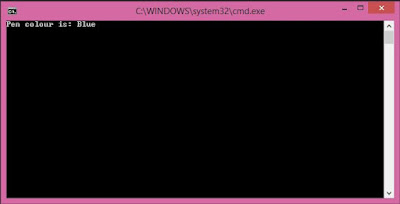Part1 -> Section1 -> Basic -> 012. Collection
ตัวแปรปกติที่เคยได้กล่าวมาก่อนหน้านี้จะสามารถเก็บข้อมูลได้เพียงค่าเดียวต่อหนึ่งตัวแปรเท่านั้น หากเราต้องการเก็บค่ามากกว่าหนึ่งค่าต่อหนึ่งตัวแปร เราจะต้องใช้ Collection ในการเก็บข้อมูล ซึ่ง Collection นั้นก็มีอยู่หลากหลายชนิด แต่ที่นี้จะกล่าวเพียงแค่สองชนิดที่ใช้บ่อย คือ Arrays และ Lists
ได้ผลลัพธ์ดังรูป
การประกาศตัวแปรทำได้หลายแบบ การเลือกใช้งานนั้นก็ต้องเลือกตามความเหมาะสม การเรียกใช้นั้นสามารถเข้าถึงค่าที่เก็บผ่าน Index ซึ่งจะเริ่มต้นจาก 0 เสมอ ( variableName[Index] ) ซึ่งปกติการใช้งาน Collection จะใช้กับ loop ตัวอย่างการใช้งานด้านล่าง
ได้ผลลัพธ์ดังรูป
โปรแกรมนี้ทำงาน เรียงต้วเลข (Array.sort) และปรินท์ออกออกมาโดยใช้ loop
2. Lists การทำงานจะเหมือนกันกับ Arrays แต่รูปแบบการจะแตกต่างกันพอสมควร ดังตัวอย่างด้านล่าง
ได้ผลลัพธ์ดังรูป
การประกาศเพื่อใช้งาน lists มีอยู่สองแบบ การใช้งานก็เหมือนเดิมคือเลือกตามความเหมาะสม จากนั้นก็เรียงข้อมูลใน lists แล้วจึง loop เพื่อปรินท์ข้อมูลออกมา ซึ่งใช้งานกับ foreach จะง่ายมากๆ
เราได้เรียนรู้จนจบพาร์ทแรกกันแล้นนะ C# Basic
สอบถามหรือติดตามได้ที่ https://www.facebook.com/learnaspnetmvcjquery
1. Arrays การประกาศนั้นจะเหมือนกับตัวแปรปกติ ต่างนิดเดียวที่มี brackets [] อยู่ที่หลังชนิดข้อมูล โปรดดูตัวอย่าง
using System;
using System.Collections.Generic;
using System.Linq;
using System.Text;
using System.Threading.Tasks;
namespace ConsoleApplication1
{
class Program
{
static void Main(string[] args)
{
// Declare arrays example 1
string[] names1 = new string[3];
names1[0] = "Somchai";
names1[1] = "Somsri";
names1[2] = "SomSak";
Console.WriteLine(names1[0]);
// Declare arrays example 2
string[] names2 = new string[3] { "Somchai", "Somsri", "SomSak" };
Console.WriteLine(names2[1]);
// Declare arrays example 3
string[] names3 = { "Somchai", "Somsri", "SomSak" };
Console.WriteLine(names3[2]);
Console.ReadLine();
}
}
}
ได้ผลลัพธ์ดังรูป
การประกาศตัวแปรทำได้หลายแบบ การเลือกใช้งานนั้นก็ต้องเลือกตามความเหมาะสม การเรียกใช้นั้นสามารถเข้าถึงค่าที่เก็บผ่าน Index ซึ่งจะเริ่มต้นจาก 0 เสมอ ( variableName[Index] ) ซึ่งปกติการใช้งาน Collection จะใช้กับ loop ตัวอย่างการใช้งานด้านล่าง
using System;
using System.Collections.Generic;
using System.Linq;
using System.Text;
using System.Threading.Tasks;
namespace ConsoleApplication1
{
class Program
{
static void Main(string[] args)
{
int[] numbers = { 5, 1, 7, 4, 9, 2 };
Array.Sort(numbers);
for (int i = 0; i < numbers.Length; i++)
{
Console.WriteLine(numbers[i]);
}
Console.ReadLine();
}
}
}
ได้ผลลัพธ์ดังรูป
โปรแกรมนี้ทำงาน เรียงต้วเลข (Array.sort) และปรินท์ออกออกมาโดยใช้ loop
2. Lists การทำงานจะเหมือนกันกับ Arrays แต่รูปแบบการจะแตกต่างกันพอสมควร ดังตัวอย่างด้านล่าง
using System;
using System.Collections.Generic;
using System.Linq;
using System.Text;
using System.Threading.Tasks;
namespace ConsoleApplication1
{
class Program
{
static void Main(string[] args)
{
//// Declare lists example 1
//List exam1 = new List();
//exam1.Add(1);
//exam1.Add(7);
//exam1.Add(3);
// Declare lists example 2
List numbers = new List() { 5, 1, 7, 4, 9, 2 };
// Sort lists
numbers.Sort();
// Loop through lists
foreach (var item in numbers)
{
Console.WriteLine(item);
}
Console.ReadLine();
}
}
}
ได้ผลลัพธ์ดังรูป
การประกาศเพื่อใช้งาน lists มีอยู่สองแบบ การใช้งานก็เหมือนเดิมคือเลือกตามความเหมาะสม จากนั้นก็เรียงข้อมูลใน lists แล้วจึง loop เพื่อปรินท์ข้อมูลออกมา ซึ่งใช้งานกับ foreach จะง่ายมากๆ
เราได้เรียนรู้จนจบพาร์ทแรกกันแล้นนะ C# Basic
สอบถามหรือติดตามได้ที่ https://www.facebook.com/learnaspnetmvcjquery




สุดยอดเลยคนับ
ตอบลบ